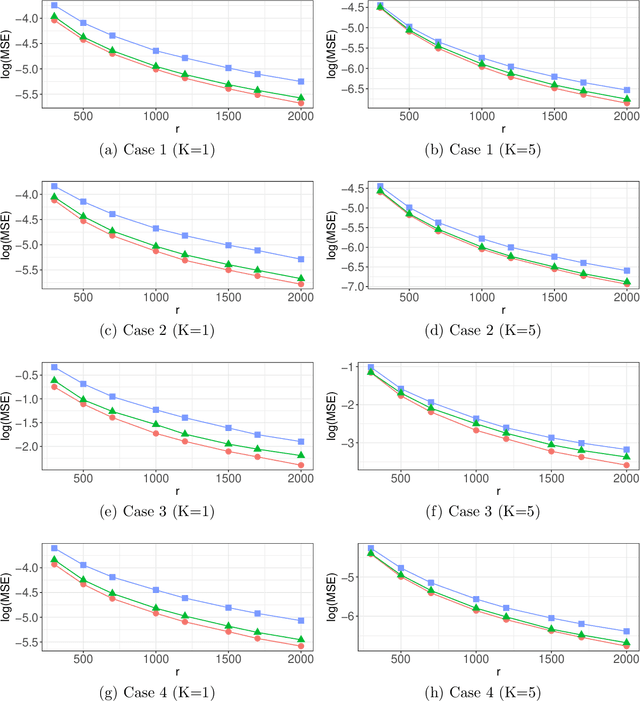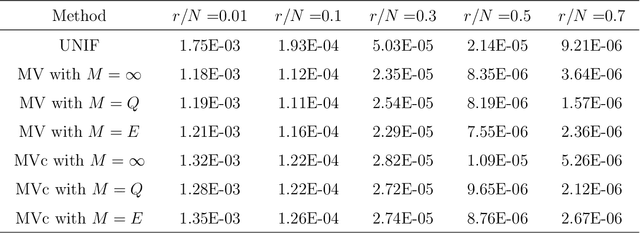Mingyao Ai
Optimal Distributed Subsampling for Maximum Quasi-Likelihood Estimators with Massive Data
May 21, 2020



Abstract:Nonuniform subsampling methods are effective to reduce computational burden and maintain estimation efficiency for massive data. Existing methods mostly focus on subsampling with replacement due to its high computational efficiency. If the data volume is so large that nonuniform subsampling probabilities cannot be calculated all at once, then subsampling with replacement is infeasible to implement. This paper solves this problem using Poisson subsampling. We first derive optimal Poisson subsampling probabilities in the context of quasi-likelihood estimation under the A- and L-optimality criteria. For a practically implementable algorithm with approximated optimal subsampling probabilities, we establish the consistency and asymptotic normality of the resultant estimators. To deal with the situation that the full data are stored in different blocks or at multiple locations, we develop a distributed subsampling framework, in which statistics are computed simultaneously on smaller partitions of the full data. Asymptotic properties of the resultant aggregated estimator are investigated. We illustrate and evaluate the proposed strategies through numerical experiments on simulated and real data sets.
RIFT: Multi-modal Image Matching Based on Radiation-invariant Feature Transform
Apr 25, 2018



Abstract:Traditional feature matching methods such as scale-invariant feature transform (SIFT) usually use image intensity or gradient information to detect and describe feature points; however, both intensity and gradient are sensitive to nonlinear radiation distortions (NRD). To solve the problem, this paper proposes a novel feature matching algorithm that is robust to large NRD. The proposed method is called radiation-invariant feature transform (RIFT). There are three main contributions in RIFT: first, RIFT uses phase congruency (PC) instead of image intensity for feature point detection. RIFT considers both the number and repeatability of feature points, and detects both corner points and edge points on the PC map. Second, RIFT originally proposes a maximum index map (MIM) for feature description. MIM is constructed from the log-Gabor convolution sequence and is much more robust to NRD than traditional gradient map. Thus, RIFT not only largely improves the stability of feature detection, but also overcomes the limitation of gradient information for feature description. Third, RIFT analyzes the inherent influence of rotations on the values of MIM, and realizes rotation invariance. We use six different types of multi-model image datasets to evaluate RIFT, including optical-optical, infrared-optical, synthetic aperture radar (SAR)-optical, depth-optical, map-optical, and day-night datasets. Experimental results show that RIFT is much more superior to SIFT and SAR-SIFT. To the best of our knowledge, RIFT is the first feature matching algorithm that can achieve good performance on all the above-mentioned types of multi-model images. The source code of RIFT and multi-modal remote sensing image datasets are made public .
 Add to Chrome
Add to Chrome Add to Firefox
Add to Firefox Add to Edge
Add to Edge